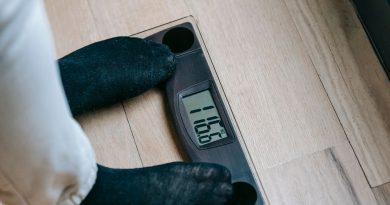How to Become a Medical Aesthetician
About 84.5 million Americans suffer from one or more skin diseases. Acne, atopic dermatitis, psoriasis, hair loss, and rosacea are among the most common.
Even worse, skin conditions can cause both aesthetic problems and mental unwellness.
Indeed, an estimated 30% of dermatology clinic patients have a comorbid psychiatric disease. This includes depression, anxiety, and in some patients, both. These mental disorders also worsen their skin conditions.
With all those complications, it’s no wonder medical aesthetician demand has increased. After all, these experts specialize in procedures aimed at protecting or improving skin.
But how does one become a licensed medical aesthetician in the first place?
This guide explains all the vital steps, so read on.
Graduate From High School
The first step to becoming a medical aesthetician is to earn your high school diploma. Alternatively, you can pass the General Educational Development (GED) test. This is a requirement in many states and medical aesthetician schools.
Enroll in a Top-Notch School
After you pass high school or get your GED certificate, it’s time to get aesthetician training. If you’re in the U.S., you may have to enroll in a state-approved or accredited medical aesthetician school. Choose one near you so you can worry less about being late for or missing classes.
Another factor to consider is the overall qualification of your potential instructors. At the very least, they should carry board certification.
Be sure to choose an institution boasting state-of-the-art technology and facilities, too. It should also have a solid commitment to providing excellent education. Dermysk Medical Aesthetics Academy explains what makes a school exceptional in more detail.
Just as crucial is to choose a school offering the following aesthetician courses:
- Proper skincare
- Skin science
- Correct makeup application methods and techniques
- Safety and sanitation
- Medical salon management
Some schools also offer advanced courses, such as those for cosmetic injections.
Depending on where you live, you may need at least 300 hours of medical aesthetic study. Some U.S. states even require 1,000 hours or more.
Apply to Take the Licensure Exam
Once you graduate from your aesthetic school, the next step is to apply for the licensure exam. In the U.S., you can do this through your state’s licensing body.
Pre-exam application helps licensing bodies confirm each candidate’s eligibility. So, you must apply to take the test/s first; you can’t just go to a testing center anytime you want.
Your application then undergoes thorough review. If approved, you should receive details about your mandatory tests.
Depending on your state, you may also have to get examined by a doctor, a physician’s assistant, or a nurse. The examiner must then complete and date a section of your application form. There’s a deadline for the submission, so check your state’s licensing agency for more info.
Prepare For the Licensure Exam
Your licensure exam is where you can prove the knowledge and skills you learned in school.
The medical aesthetic licensure exam can be theoretical (written), practical (hands-on), or both. The exact requirements vary from state to state. For example, California only requires the written exam, while New York requires both.
The theoretical exam often covers scientific concepts and aesthetic practices.
Scientific concepts may include the following:
- Anatomy and physiology
- Skin conditions and disorders
- Anatomy of hair and growth cycle
- Sanitation and infection control methods
- Chemistry and skin care chemicals
As for the written exam for aesthetic practices, it may cover the following topics:
- Skin analysis and treatment procedures
- Skin cleansing, exfoliation, extraction, and steaming
- Proper product application and removal
- Use of electrical devices
- Hair removal methods
- Makeup and color theory
If your state requires practical testing, prepare for the following:
- Safe and sanitary client setup
- Facial cleansing, steaming, and massage
- Facial masks and makeup application
- Hair removal
Do your best to study all those topics before your scheduled exam. As a good rule of thumb, aim to get at least 3 to 4 hours of review time daily for one to two months. Never cram, as experts say it is not an efficient strategy.
Sleep Well Before Your Exam
Get 7 to 9 hours of high-quality sleep nightly for the entire week before your licensure exam. This can help make you feel less stressed or anxious on the big day.
Plus, research says students who sleep better often enjoy better grades and recall. There’s also an association between better sleep and improved academic performance.
It also pays to review the application acceptance letter you received. Check and follow all the instructions, especially the needed documents. These include the letter and a valid, government-issued photo ID.
Most testing centers prohibit any other item aside from the two above. So, leave your smartphone and study materials in your car or at home.
Pass Your Exam to Get Licensed
The passing scores vary across states, but most set the minimum at about 70%. The exam often consists of 70 questions. Scientific concepts make up 35%, while the remaining 65% are for aesthetic practices.
While the minimum passing score is 70%, don’t settle for that; aim for the highest possible grade. This can help boost your employment opportunities.
Maintain Your License
You can start looking for work as soon as you get licensed as a medical aesthetician. However, remember that you must also renew your license to continue working as one.
How often you need license renewal depends on your state; in some, it’s annual. In others, it’s between 2 and 4 years.
You may also have to complete continuing education to maintain your license. But even if it’s not mandatory, you should still consider doing so. This helps you stay on top of the latest in medical aesthetic advancements.
Become an Excellent Medical Aesthetician
Becoming a medical aesthetician means being part of a $13.8 billion industry. It also means being able to help people suffering from various skin conditions.
So, if you want to help people feel and look good, it’s time to become an excellent medical aesthetician. Doing so also gives you a chance to enjoy a well-paying career.
If you liked this article, you’d love our other career-related tips and tricks. For starters, check out our guide on getting your dream occupation!







